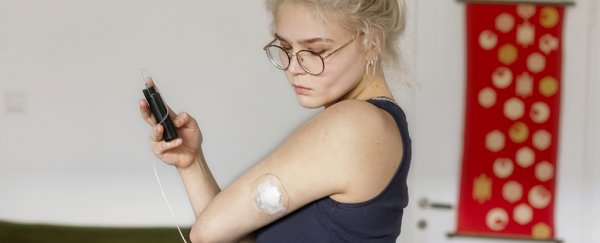Being diagnosed with type 1 diabetes today means a lifetime of insulin injections – as of yet, we don't have a simple one-time fix on hand.
To date, each breakthrough promising a diabetes cure has encountered significant hurdles, making it not viable for the vast majority of people. Now, researchers in the US have improved upon one type of transplant-based treatment, potentially giving hope to the 9 million people around the world with this condition.
"The immune system is a tightly controlled defense mechanism that ensures the wellbeing of individuals in an environment full of infections," explains one of the researchers, University of Missouri immunologist Haval Shirwan.
"Type 1 diabetes develops when the immune system misidentifies the insulin-producing cells in the pancreas as infections and destroys them."
These insulin-producing cells are grouped into clusters called pancreatic islets, which end up being destroyed by the malfunctioning immune cells of the body.
Helpful treatments include an islet cell transplant, or a transplant of an entire pancreas, to provide more islets for insulin production. However, these aren't without risks; people who receive transplants also need to take immunosuppressive drugs for the life of the transplant, to ensure the rogue immune cells don't destroy the new tissue as well.
"Islet graft recipients must be immunosuppressed for the rest of their lives with agents that not only are toxic to the recipient and graft β cells but also may induce peripheral insulin resistance," the team writes in their new paper.
"Thus, the development of tolerogenic regimens that obviate the need for immunosuppression will facilitate the broad application of islet transplantation as a cure for type 1 diabetes."
In a preclinical study using cynomolgus monkeys (also known as the crab-eating macaque) the team had incredible success by transplanting islets combined with a microgel containing FasL – a protein involved in cell death – on its surface.
"A type of apoptosis occurs when a molecule called FasL interacts with another molecule called Fas on rogue immune cells, and it causes them to die," says University of Missouri immunologist Esma Yolcu.
"Therefore, our team pioneered a technology that enabled the production of a novel form of FasL and its presentation on transplanted pancreatic islet cells or microgels to prevent being rejected by rogue cells.
"Following insulin-producing pancreatic islet cell transplantation, rogue cells mobilize to the graft for destruction but are eliminated by FasL, engaging Fas on their surface."
This is not the only change from a traditional transplant. Instead of transplanting the cells to the liver (the typical clinical route), the researchers formed a small pouch in the omentum, a large flat layer of fat tissue just below the stomach.
"Unlike the liver, the omentum is a non-vital organ, allowing its removal should undesired complications be encountered," says lead author, Massachusetts General Hospital immunologist Ji Lei.
"Thus, the omentum is a safer location for transplants to treat diabetes and may be particularly well suited for stem-cell-derived beta cells and bio-engineered cells."
Four of the monkeys received the FasL microgels, while three controls received microgels with no FasL. The researchers then gave the monkeys just one anti-rejection drug called rapamycin for three months after the transplant surgery.
After this, the drugs were stopped and the monkeys that had received the FasL treatment all maintained their glycemic control for the entire study period – up to 188 days post-surgery.
Unfortunately, the experiment had to be cut short due to COVID-19, but compared to the controls, which maintained glycaemic control for only a month on average, this is a great result.
"Our strategy to create a local immune-privileged environment allowed islets to survive without long-term immunosuppression and achieved robust blood glucose control in all diabetic nonhuman primates during a six-month study period," says Lei.
"We believe that our approach allows the transplants to survive and control diabetes for much longer than six months without anti-rejection drugs because surgical removal of the transplanted tissue at the end of the study resulted in all animals promptly returning to a diabetic state."
Although planning is starting for a human clinical trial, there's still a long way to go before this is something a type 1 diabetes patient could actually expect to receive.
Also, it's important to note that monkeys – despite being very similar – are not humans. For example, the researchers point out that the omentum in monkeys is a much thinner membrane than in humans, so the results could be different.
We'll need more research to find out for sure.
Nevertheless, this is an impressive result, and members of the team have filed a patient and started a new company to bring their findings to clinical trials.
The research has been published in Science Advances.
